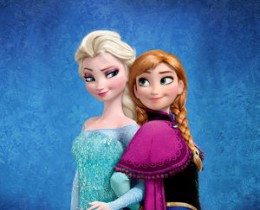“Frozen” Huge in Japan Because KARAOKE (Also Empowerment)

Disney’s Frozen is the best movie ever according to lots of four-year-olds and one of the most successful ever according to facts. It has made over $1,000,000,000. You see all those zeros? That’s a lot of mouths gaping open in surprise at how well a lady-driven Scandinavian-ish cartoon featuring a talking snowman has done.
One corner of the globe where the movie musical phenomenon has been a surprising extra-super hit, though? Japan.
The movie’s made $231.8 million in Japan so far, more than any movie in Japan’s history except Spirited Away in 2001 and Titanic in 1997 — and it’s within striking distance of the latter. … Japan’s Frozen box-office receipts have contributed 19% of worldwide earnings, second in the world behind the US’s 32%, even though Japan has less than half the population of the US.
So, nanika atta?According to the article’s analysis, two factors have launched Frozen into the stratosphere: 1) girl-power, at a time when Japan is wrestling with its retrograde and contradictory attitudes towards women; and 2) the power of song, which capitalizes on the country’s obsession with karaoke.
I’m by no means an expert, having only visited for a couple of weeks, but I was fascinated by the culture — tech-wise, it was like 2021; gender-wise, like 1963 — and have a couple of other theories to add. When the country’s current cinematic record-holder is Spirited Away, it becomes clear that Japan appreciates creativity in animation more than most. There’s also the film’s strong message of sloughing off the shame and embracing your inner je ne sais quoi. I’ve written elsewhere about how “Let It Go” is Elsa’s Pride Parade for One, both a coming-out and coming to terms with the complexity of her identity. That kind of in-your-face individualism isn’t much prized in the culture, or hasn’t been until now.
Even in the heart of Tokyo, I stood out for wearing red shorts and sneakers, and felt like an idiot — I wish someone had warned me. The women my age and older tended to wear pencil skirts and kitten heels, both in subdued colors, while younger women wore drab school uniforms. Even the attention-getting “Harajuku girls’” costumes seemed standardized. It seems unlikely that flaunting one’s uniqueness will ever be as big in Japan as, say, getting drunk with your boss and belting out pop standards, but if Frozen makes even a bit of a difference in terms of encouraging girls to break from conformity and embrace their own weirdo, potential frightening powers, the Disney folks behind the film will have done something to be proud of.
Support The Billfold
The Billfold continues to exist thanks to support from our readers. Help us continue to do our work by making a monthly pledge on Patreon or a one-time-only contribution through PayPal.
Comments